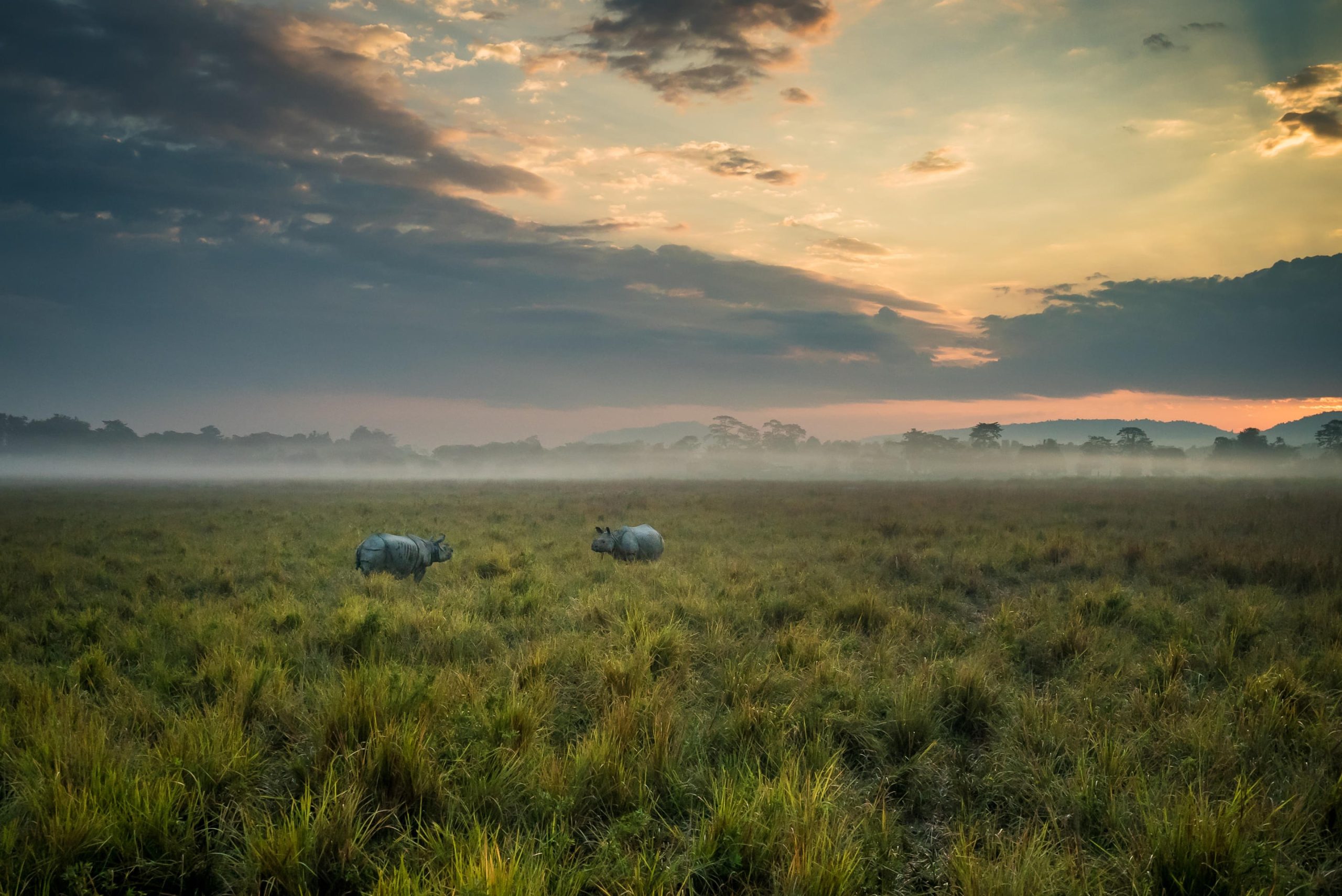Nestled in the heart of Assam, Kaziranga National Park is a UNESCO World Heritage Site renowned for its rich biodiversity and stunning landscapes. Covering an area of approximately 430 square kilometers, the park is home to the world’s largest population of the endangered one-horned rhinoceros, making it a significant destination for wildlife enthusiasts and conservationists alike. Kaziranga’s mix of grasslands, wetlands, and tropical forests offers a unique opportunity for travelers to immerse themselves in nature while encountering rare species in their natural habitat.
Whether you’re a wildlife photographer, a nature lover, or someone seeking a serene escape from city life, Kaziranga National Park offers an experience like no other. For those planning a trip, there are several Kaziranga National Park tour packages available that cater to various travel styles and budgets, ensuring a hassle-free visit to this stunning park. These packages often include guided safaris, accommodation, meals, and transfers, allowing visitors to focus on enjoying the park’s wonders without the stress of planning every detail.
Getting to Kaziranga
Kaziranga National Park is situated in the northeastern state of Assam and is easily accessible by air, rail, and road. The nearest airport is in Jorhat, located about 97 kilometers away, while the Guwahati airport, approximately 217 kilometers away, is a larger international gateway. From either airport, you can opt for a private cab or shared transportation to reach Kaziranga.
Travelers who prefer trains can head to the Furkating Junction, which is 75 kilometers away from Kaziranga. From there, buses or cabs can be arranged for the final leg of the journey. For those who want a smooth and organized travel experience, choosing a Kaziranga National Park tour package can be a great option, as most packages include transportation from major hubs, offering added convenience and comfort. With the transportation sorted, visitors can fully focus on the park’s mesmerizing beauty without worrying about logistical challenges.
Best Time to Visit Kaziranga National Park
The park remains closed during the monsoon season (May to October) due to heavy rains and flooding, making the best time to visit between November and April. During these months, the weather is pleasant, and wildlife sightings are at their peak. If you’re visiting in the winter months (December to February), be prepared for cooler temperatures, especially during early morning safaris.
Spring (March and April) is another excellent time to explore Kaziranga, as the landscape bursts into life with vibrant greenery and blossoming flowers. The animals are more active during this period, and birdwatching opportunities are abundant, with migratory species flocking to the park’s wetlands. Regardless of when you plan your visit, booking your safari in advance is essential, especially if you’re traveling during peak season. Many Kaziranga National Park tour packages offer safari bookings as part of their itinerary, ensuring you don’t miss out on the chance to witness the wildlife up close.
Wildlife Safari in Kaziranga
One of the main attractions of Kaziranga National Park is its safari options. The park is divided into four ranges: Central, Western, Eastern, and Burapahar, each offering unique landscapes and wildlife sightings. Jeep safaris and elephant safaris are the two primary ways to explore the park.
- Jeep Safari: Available in all four ranges, the jeep safari offers visitors a comfortable and comprehensive view of the park’s diverse habitats. It’s ideal for families, wildlife photographers, and those who want to cover more ground in a shorter time. The Western Range is known for its high chances of spotting rhinos and tigers, while the Eastern Range is a haven for birdwatchers due to its extensive wetlands.
- Elephant Safari: For a more intimate experience, the elephant safari takes you closer to the animals, allowing for better sightings of the one-horned rhinoceros, wild elephants, and swamp deer. The elephant safari usually covers the central zone of the park and is conducted early in the morning, offering a peaceful and less crowded experience.
It’s important to book your safaris well in advance, especially during the peak tourist season. Kaziranga National Park tour packages often include both jeep and elephant safari options, giving visitors flexibility and ease in planning their activities.
Accommodation in Kaziranga
Kaziranga offers a range of accommodation options, from luxury resorts to eco-friendly lodges and budget guesthouses. Most lodges are located near the park’s entrance gates, offering easy access to safari starting points. Some of the top-rated places to stay include:
- Diphlu River Lodge: Known for its luxurious cottages and stunning views of the Diphlu River, this eco-friendly lodge provides a perfect blend of comfort and wilderness.
- Iora – The Retreat: This is a popular choice among tourists for its modern amenities and proximity to the park.
- Wild Grass Lodge: A more rustic option that focuses on providing an immersive experience in nature, ideal for wildlife enthusiasts.
Many of these accommodations partner with travel agencies to offer Kaziranga National Park tour packages that include meals, guided safaris, and cultural experiences like Assamese dance performances.
Wildlife in Kaziranga
Kaziranga National Park is world-famous for its population of one-horned rhinoceros, but it’s also home to a wide range of other wildlife species. The park hosts Bengal tigers, Asian elephants, wild water buffalo, swamp deer, and a variety of reptiles like the monitor lizard and Indian python.
For birdwatchers, Kaziranga is a paradise. Over 500 bird species, including migratory birds from Central Asia, Siberia, and Europe, can be spotted in the park. Notable species include the great hornbill, eastern imperial eagle, and the lesser adjutant stork. The Eastern Range, in particular, offers excellent opportunities for birdwatching due to its large wetlands and marshes.
Responsible Tourism in Kaziranga
As Kaziranga is a protected area, it’s essential for visitors to engage in responsible tourism practices. Follow all park rules, avoid littering, and respect the wildlife by maintaining a safe distance. Travelers should also avoid using plastic and other non-biodegradable materials to preserve the park’s pristine environment.
Several Kaziranga National Park tour packages promote eco-friendly and sustainable tourism practices, encouraging visitors to support local communities by purchasing handmade goods or participating in cultural activities.
Nearby Attractions
While Kaziranga is the main attraction, there are several nearby places worth exploring:
- Tea Gardens: Assam is famous for its tea, and visiting one of the nearby tea gardens can offer insights into the region’s tea production process.
- Majuli Island: A few hours away, Majuli is the world’s largest river island and a cultural hub for Assam’s Vaishnavite traditions.
- Sivasagar: Known for its historical significance, Sivasagar was once the capital of the Ahom Kingdom and is home to several ancient temples and monuments.
Conclusion
Kaziranga National Park offers a truly unique wildlife experience, where nature lovers can witness some of India’s most iconic animals in their natural habitat. Whether you’re seeking adventure or tranquility, Kaziranga has something for every traveler. With a variety of Kaziranga National Park tour packages available, you can ensure a seamless and unforgettable trip to one of India’s most treasured national parks.




